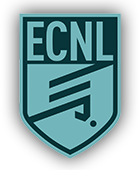Common Mistakes Made Trying To Improve Athleticism That Create Injury Risk
Interview with Calvin Deutsch
Every aspiring player wants to be a quicker, faster, and stronger athlete. Every parent wants to do everything possible to help their young athlete maximize their abilities and have a better chance of reaching their goals. In a world where dozens of companies and individuals offer "personal training," "physical training," "speed and quickness training," and more, the pressure to do more is significant.
Unfortunately, in this search for constant improvement, many players and parents actually create a process of diminishing returns and significantly heightened injury risk by doing too much, doing things at the wrong time, doing the wrong activities, or simply just failing to coordinate and plan for the different demands created by different activities.
So, what are some common mistakes made when trying to improve a player's athleticism?
Calvin Deutsch: The biggest mistake I see players and parents make is seeking out a traditional and isolated "Strength and Conditioning" facility or coach that incorporates generic exercises, despite the claim of being "sport specific", during the wrong time of the year, and without consideration of other things going on in the athlete's life. This creates a situation where the player becomes over-over-loaded and injuries result.
Example #1: A seventeen year old central midfielder wants to become more "athletic" and prevent knee injury due to a history of knee and ankle problems. To do this, she signs up for 8 sessions of "soccer specific strength and conditioning" at the onset of the pre-season. Due to the logistics of the schedule and trying to get everything in, the player completes the 60 minute strength session on the same day as her 90 min soccer practice. A few days later, in a game at the end of the week, the same player sprains her ankle.
Many people think this is an "unlucky" injury. However, the reality is that this ankle sprain was primarily a result of nerve-muscular fatigue. This means that the athlete's nerve-muscle system was fatigued from over-training from the combination of strenght sessions and team training sessions, and therefore the system was less able to produce protective responses to injury. In other words, the muscles around the ankle didn't activitate as quickly or as strongly as they could have to prevent the ankle sprain.
Example #2: A fourteen year old aspiring player who has a very strong determination to play Division 1 soccer wants to improve her speed, quickness, and strength by doing extra training. She is signed up for similar "strength and conditioning sessions" through a large training facility. These sessions are concurrent with soccer training. After four weeks the player develops a thigh injury. This player also unsuccessfully attended physical therapy for 5-6 sessions while trying to return to track, which exacerbated the problem.
Again, many people think this is an "unlucky" injury but the reality is this injury came from the added physical strain of the additional strength sessions. The injury is a result of excessive hip-flexor driven 'abdominal strengthening' and causes the athlete to miss a few weeks of soccer.
Example #3: An eighteen year old goalkeeper needs to pass the "fitness tests" for her team so she does a significant amount of guided track and speed work through the off/pre-season to become faster. She does this until her shin becomes tender to the touch and she has pain with moving off the balls of her feet and jumping. She is unable to perform the first fitness test and starts off the season with an overuse injury.
From a basic starting point, because this player is a goalkeeper, she should never have to run much in a game and should be focusing on totally different physical/cognitive attributes. Unfortunately, a short-sighted coach wanted all the players to complete the isolated fitness tests and created the conditions for injury, and significant missed time for the player.
In each of the above examples, the parents and players were spending extra time, money, effort and energy to get better. This, in itself, is a a very positive desire. Unfortunately, because of misunderstanding about the athletic development process - especially in young athletes - and through no other fault of their own, each player got hurt because of over-training and then had to sit out of the sport for a significant period. In a very real sense, the desire to do more and get better actually put the player farther behind.
The number of frustrated players and parents I've seen because of this process continues to grow each year. A few general comments:
- "Generic In = Generic Out" when it comes to training, for soccer, strength, or whatever the goal. If you see athletes from a different sport doing the same general exercises, then the exercies are not sport-specific, and they likely aren't as productive as they should be.
- "Less is More" is very true when it comes to intentional high quality training, for soccer, strength or whatever the training goal. Often, parents and players (and sometimes misguided but well-intentioned coaches) fall into the "more is better" approach. On a very basic level, a real off-season should not be filled with high intensity training, as the player's body then never gets the opportunity to actually recover from previous soccer training; they then start the next period of soccer training fatigued and more likely to get injured. Even more problematically and as illustrated by the cases above, adding high intensity training (and to a certain extent any type of additional and "unaccounted for" training) significantly raises the risk of injury within the season.
- "Plan Your Calendar!" Every part of the year has a purpose, whether in-season, off-season, or pre-season. Different player characteristics should be targeted during each time of year to develop a well rounded, happy, and healthy player. When the the year-round activities of a player are well coordinated, the player will thrive, and that is what we are all here for.




